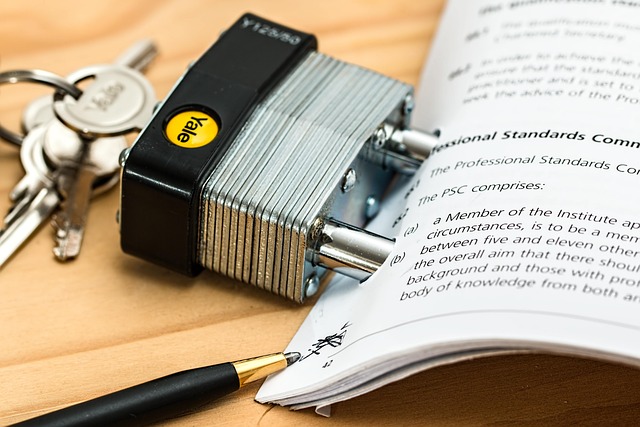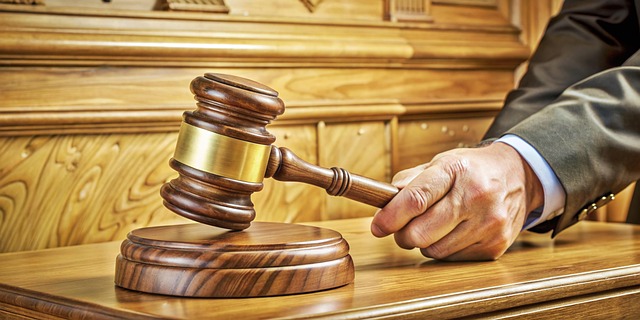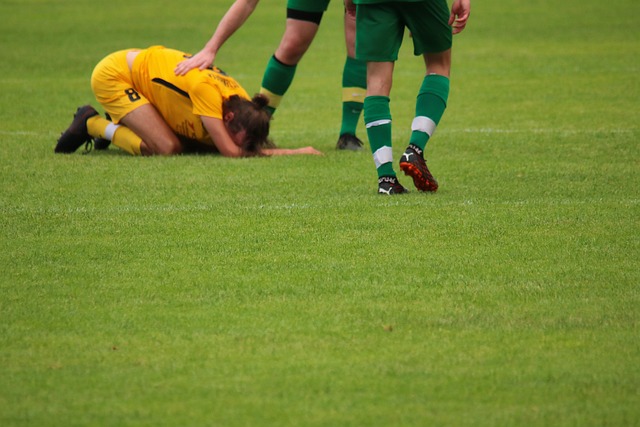Navigating Wrongful Death Product Liability with Legal Support for Healing

Families dealing with wrongful death due to product liability issues find solace in specialized lawy…….
In an increasingly interconnected world, the concept of wrongful death product liability has emerged as a critical aspect of global legal frameworks, shaping industries and influencing consumer safety. This comprehensive article delves into the intricacies of wrongful death product liability, exploring its historical roots, international reach, economic implications, technological integrations, policy landscapes, challenges, and future potential. By examining these facets, we aim to provide a thorough understanding of this complex topic and its profound impact on society.
Definition: Wrongful death product liability refers to the legal responsibility held by manufacturers, distributors, and other entities in the supply chain for injuries or deaths caused by defective products. It is a form of civil litigation where individuals or families affected by such incidents can seek compensation and justice.
Core Components:
Product Defect: This could be a manufacturing flaw, design inadequacy, inadequate warning labels, or failure to meet safety standards. The defect must be established as the direct cause of harm.
Negligence or Strict Liability: Legal frameworks may impose strict liability, holding manufacturers accountable regardless of fault, or apply a negligence standard, requiring proof that the defendant acted recklessly or negligently.
Causation and Damages: Plaintiffs must prove that the product defect caused the harm or death. The damages awarded can include medical expenses, lost earnings, pain and suffering, and in wrongful death cases, survival benefits for dependents.
The concept of product liability has evolved significantly over time, with roots tracing back to ancient Roman law and English common law principles. However, modern-day product liability laws gained prominence in the 20th century due to increasing industrialisation and consumer awareness. Key milestones include:
United States: The first modern product liability case, Greene v. Yuba Power Products, was decided in 1963, setting the stage for strict liability rules. The 1970s saw a surge in product liability litigation, leading to reforms and clarifications in state laws.
Europe: The European Economic Community (EEC) introduced Directive 75/230/EEC in 1975, which formed the basis for harmonised product liability regulations across member states. This was later replaced by the EU Product Liability Directive 2006/42/EC.
International Conventions: The United Nations’ London Rules (1994) and the European Union’s General Product Safety Directive (2001) further solidified global standards for product safety and liability.
Wrongful death product liability has a profound international reach, with varying degrees of implementation and interpretation across jurisdictions. Key trends shaping its landscape include:
| Region | Product Liability Framework | Notables Features |
|---|---|---|
| United States | State-based laws with uniform standards due to the Uniform Commercial Code (UCC) | Strict liability for defective products, with variations across states |
| European Union | EU Product Liability Directive 2006/42/EC | Harmonised standards, emphasis on product safety, and manufacturer responsibility |
| Japan | Product Liability Law (1994) | Similar to US approach, with strict liability and a focus on consumer protection |
| Australia | Consumer Law (based on the Australian Consumer Law) | Strict liability for certain products, with exemptions and defenses available |
| China | Product Quality Law (2010) | Focuses on product safety, with provisions for compensation and penalties |
These frameworks influence global trends by setting benchmarks for consumer protection and manufacturer accountability. For instance, the EU’s stringent product safety standards have often been adopted or adapted by other regions, fostering a more uniform approach to product liability.
The economic aspects of wrongful death product liability are multifaceted, impacting markets, investment, and overall economic systems:
Market Dynamics: Strict product liability laws can lead to increased product testing, improved quality control, and enhanced consumer confidence. This may result in higher product prices but also encourages innovation and competitive differentiation based on product safety.
Investment Patterns: Investors view product liability risks as a factor when assessing companies. Industries with higher potential liability exposure may see variations in investment flows, influencing stock prices and corporate strategies.
Economic Impact: Wrongful death product liability can have economic consequences for businesses, particularly small enterprises, due to legal costs and compensation payments. However, it also fosters a more robust insurance market, providing financial protection for manufacturers.
Technology plays a pivotal role in both enhancing product liability challenges and opportunities:
Product Complexity: Modern products, especially electronics and medical devices, are increasingly complex, making it easier for defects to go undetected during manufacturing. This complexity adds layers of responsibility for manufacturers and suppliers.
Data Analytics: Advanced analytics can improve product safety by identifying patterns in defective products, enabling proactive recalls. Machine learning algorithms can also predict potential failures, leading to better risk management.
Internet of Things (IoT): The rise of IoT introduces new liability considerations. As connected devices become more prevalent, the potential for data breaches and unauthorized modifications increases, creating additional risks for manufacturers.
Key policies and regulations govern wrongful death product liability, ensuring consumer protection and accountability:
National Laws: Most countries have enacted comprehensive product liability laws, often based on international standards, to regulate product safety, labeling, and manufacturer responsibilities.
International Treaties: Agreements like the Paris Convention for the Protection of Industrial Property and the World Trade Organization (WTO) agreements influence product liability policies by promoting fair trade practices and intellectual property rights.
Industry Standards: Voluntary industry standards play a crucial role in supplementing legal frameworks. Organizations like ISO (International Organization for Standardization) develop guidelines for product safety, quality management, and testing procedures.
Despite its importance, wrongful death product liability faces several challenges and criticisms:
Vagueness and Interpretation: Legal language in product liability laws can be complex and open to interpretation, leading to inconsistencies in case outcomes and potential loopholes.
Burden of Proof: Plaintiffs often bear the burden of proving defectivity and causation, which can be challenging, especially with complex products or when evidence is scarce.
Cost and Time: Product liability litigation is notorious for being lengthy and expensive, deterring some plaintiffs and creating a barrier to access justice.
Proposed Solutions:
Legal Reform: Simplifying legislation, providing clear guidelines, and addressing ambiguities can enhance the fairness of product liability cases.
Early Intervention: Implementing systems for early product identification and recall can prevent harm and reduce the financial burden on all parties involved.
Alternative Dispute Resolution: Encouraging mediation and arbitration as alternatives to traditional litigation can streamline processes and reduce costs.
This landmark case established a precedent for strict product liability in the US. Plaintiffs sued Ford Motor Company for designing and manufacturing the Pinto with a fuel tank that could rupture in rear-end collisions, causing fires. The court ruled in favor of the plaintiffs, setting a standard for holding manufacturers strictly liable for defective products. This case demonstrated the power of product liability law in addressing systemic safety issues.
The global medical device industry faced numerous product liability challenges during this period due to faulty devices causing harm. For instance, the recall of certain hip implants led to significant legal consequences for manufacturers. These cases highlighted the importance of robust quality control and regulatory oversight in high-risk industries.
The rise of e-cigarettes sparked a wave of product liability cases, focusing on manufacturer responsibility for health risks associated with these products. Plaintiffs argued that manufacturers should have warned consumers about potential long-term effects. This case study underscores the evolving nature of product liability, keeping pace with new technologies and their associated risks.
The future landscape of wrongful death product liability is shaped by emerging trends and technological advancements:
AI and Predictive Analytics: Artificial intelligence can revolutionize product liability by enabling more accurate predictions of potential defects and safety issues, leading to proactive measures.
Cybersecurity in IoT: As the Internet of Things expands, so does the risk of cyberattacks on products. Manufacturers will need robust cybersecurity protocols to protect consumers and avoid product liability claims.
Biotechnology and Genetic Testing: Advancements in biotechnology may lead to more stringent safety requirements for products that interact with genetic material or involve genetic modifications.
Global Harmonisation: Efforts to harmonise product liability regulations worldwide are expected to continue, fostering a more uniform approach to consumer protection.
Wrongful death product liability is a complex and evolving field, reflecting society’s changing relationship with technology and consumer goods. As global interconnectedness deepens, so does the need for robust legal frameworks that balance consumer protection with economic viability. This article has explored various facets of wrongful death product liability, from its historical roots to future prospects, highlighting its significance in ensuring safety and accountability.
Q: How do I know if I have a valid product liability claim?
A: To determine validity, assess whether the product had a defect that caused harm or death, and if there was a reasonable connection between the defect and the incident. Consulting with a legal professional experienced in product liability is advisable.
Q: What is the statute of limitations for filing a wrongful death product liability lawsuit?
A: The statute of limitations varies by jurisdiction but generally ranges from 1 to 3 years from the date of harm or discovery of the defect. It’s crucial to act within this timeframe.
Q: Can I sue if the product was used as intended?
A: Not always. Manufacturers are typically held liable for defects, not for users’ misuse of products, unless such misuse is reasonably foreseeable and the product lacks adequate warning.
Q: How do global product liability laws impact international business?
A: Global laws create a complex environment for multinational corporations. They must navigate varying legal standards and interpret them in line with local practices to avoid liability and ensure compliance.
Q: What role does consumer awareness play in product liability?
A: Consumer awareness is crucial as it can influence the demand for safer products, prompting manufacturers to enhance quality control and labeling. Educated consumers are better equipped to identify potential risks.

Families dealing with wrongful death due to product liability issues find solace in specialized lawy…….

Wrongful death product liability cases hold manufacturers accountable for defective products causing…….

Product liability laws hold manufacturers accountable for product defects causing harm or fatalities…….

Wrongful death product liability cases arise when a defective or hazardous product causes an uninten…….

Wrongful death product liability cases involve complex legal issues arising from defective products…….

Product labels, though crucial communication tools, often fall short in wrongful death product liabi…….

Product liability wrongful death cases require lawyers to navigate complex legal terrain by gatherin…….

Wrongful death product liability cases focus on identifying defective goods that cause severe harm,…….

When selecting a law firm for a wrongful death product liability case, consider legal expertise, str…….

Wrongful death product liability lawsuits arise when defective products cause consumer fatalities, g…….